ARTIFICIAL RECHARGE OF GROUND WATER
The term artificial recharge has different connotations for various practitioners.Artificial recharge to ground water is defined as the recharge that occurs when the natural pattern of recharge is deliberately modified to increase recharge (ASCE 2001). The process of recharge itself is not artificial. The same physical laws govern recharge, whether it occurs under natural or artificial conditions. What is artificial is the availability of water supply at a particular location and a particular time. In the broadest sense one can define artificial recharge as “any procedure, which introduces water in a pervious stratum”.
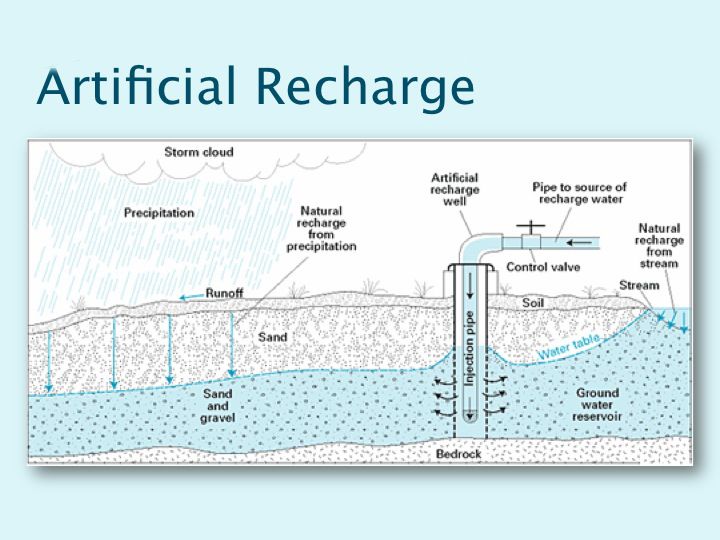
The term artificial recharge refers to transfer of surface water to the aquifer by human interference. The natural process of recharging the aquifers is accelerated through percolation of stored or flowing surface water, which otherwise does not percolate into the aquifers. Artificial recharge is also defined as the process by which ground water is augmented at a rate exceeding that under natural condition of replenishment.Therefore, any man-made facility that adds water to an aquifer may be considered as artificial recharge (CGWB, 1994)
Artificial recharge aims at augmenting the natural replenishment of ground water storage by some method of construction, spreading of water, or by artificially changing natural conditions. It is useful for reducing overdraft, conserving surface run-off, and increasing available ground water supplies. Recharge may be incidental or deliberate, depending on whether or not it is a by-product of normal water utilization.
Artificial recharge can also be defined as a process of induced replenishment of the ground water reservoir by human activities. The process of supplementing may be either planned such as storing water in pits, tanks etc. for feeding the aquifer or unplanned and incidental to human activities like applied irrigation, leakages from pipes etc.
Concept of Recharge
Flow below the land surface takes place due to the process of infiltration. The soil will not get completely saturated with water unless water supply is maintained for prolonged periods. If water is applied only intermittently, there may be no recharge during the first infiltration or even between two subsequent infiltrations. The evolution of water in the soil during the period between two instances of infiltration is referred to as redistribution. Recharge may take place even when no hydraulic connection is established between the ground surface and the underlying aquifer.
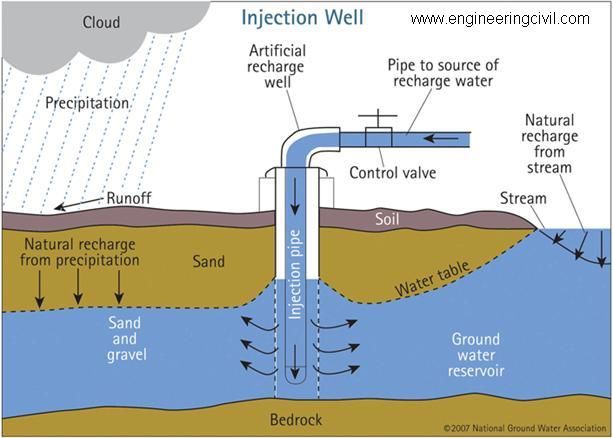
The hydraulic effects generated by artificial recharge are basically of two types, viz. piezometric effect and volumetric effect. The piezometric effect results in a rise of the piezometric surface, the magnitude of which depends on the geologic and hydraulic boundaries of the aquifer being recharged and the type, location, yield and duration of the recharge mechanism. It is also related to the ratio of transmissivity (T) of the aquifer and the replenishment coefficient (C), which is equal to the storage coefficient. Other factors such as capillary forces, water temperature and presence of air bubbles in the aquifer also have an impact on the piezometric effect.
The volumetric effect is related to the specific yield, replenishment coefficient, transmissivity and the geologic and hydraulic boundaries of the aquifer. Model studies that were checked through field experiments have demonstrated that the bulk of the recharge water moves according to two systems of flow, one resulting in a spreadingout effect with a speed related to the recharge flow and the other in a sliding effect, with a speed related to ground water flow.
Need for Artificial Recharge
Natural replenishment of ground water reservoir is a slow process and is often unable to keep pace with the excessive and continued exploitation of ground water resources in various parts of the country. This has resulted in declining ground water levels and depletion of ground water resources in such areas. Artificial recharge efforts are basically aimed at augmentation of the natural movement of surface water into ground water reservoir through suitable civil construction techniques. Such techniques interrelate and integrate the source water to ground water reservoir and are dependent on the hydrogeological situation of the area concerned.
Occurrence of rainfall in India is mostly limited to about three months in a year. The natural recharge to ground water reservoir is restricted to this period only in a major part of the country. Artificial recharge techniques aim at extending the recharge period in the post-monsoon season for about three or more months, resulting in enhanced sustainability of ground water sources during the lean season.
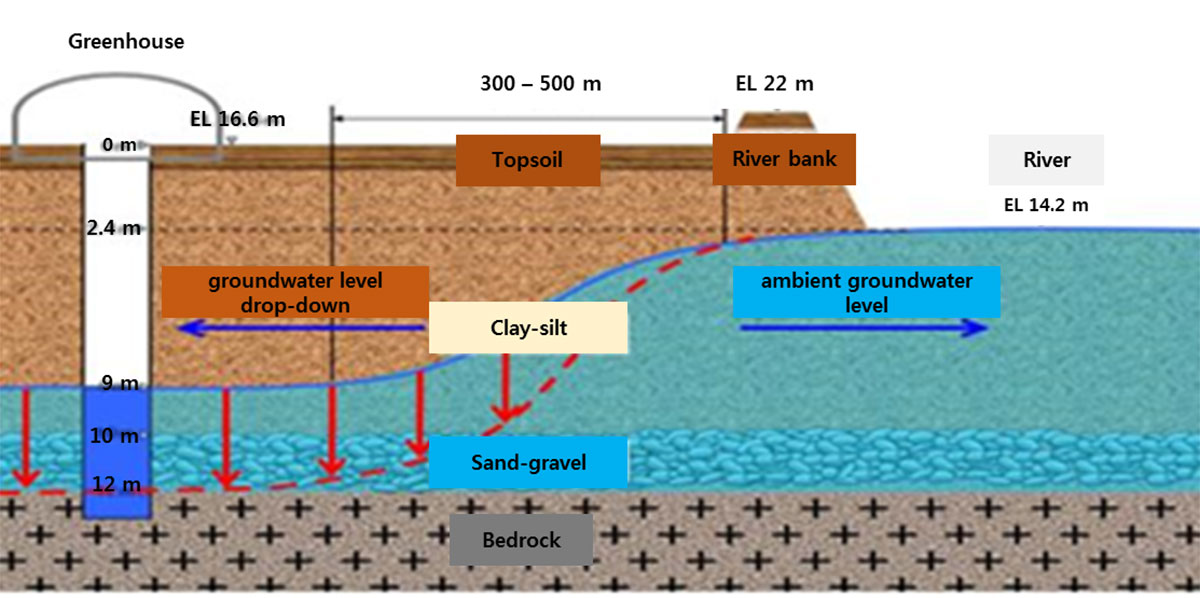
In arid regions of the country, rainfall varies between 150 and 600 mm/ year with less than 10 rainy days. A major part of the precipitation is received in 3 to 5 major storms lasting only a few hours. The rates of potential evapotranspiration (PET) are exceptionally high in these areas, often ranging from 300 to 1300 mm. In such cases, the average annual PET is much higher than the rainfall and the annual water resource planning has to be done by conserving the rainfall, by storing the available water either in surface or in sub-surface reservoirs. In areas where climatic conditions are not favourable for creating surface storage, artificial recharge techniques have to be adopted for diverting most of the surface storage to the ground water reservoirs within the shortest possible time.
In hilly areas, even though the rainfall is comparatively high, scarcity of water is often felt in the post-monsoon season, as most of the water available is lost as surface runoff. Springs, the major source of water in such terrains, are also depleted during the post monsoon period. In such areas, rainwater harnessing and small surface storages at strategic locations in the recharge areas of the springs can provide sustainable yields to the springs as well as enhance the recharge during and after rainy season.
Purposes and Principles of Artificial Recharge
There are many reasons why water is deliberately placed into storage in ground water reservoirs. A large percentage of artificial recharge projects are designed to replenish ground water resources in depleted aquifers and to conserve water for future use. Other such projects recharge water for various objectives such as control of salt-water encroachment, filtration of water, control of land subsidence, disposal of wastes and recovery of oil from partially depleted oil fields.
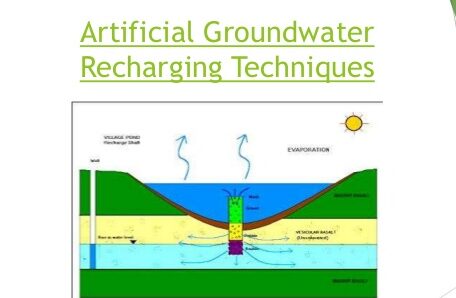
In certain coastal areas of the world, artificial recharge systems for blocking inland encroachment of seawater are in operation. Most of these schemes rely on the injection of fresh water through wells in order to build up a pressure barrier that will retard or reverse encroachment of salt water resulting from excessive withdrawals from the wells. In such schemes, most of the injected water is not directly available for use, but serves as a hydraulic mechanism to allow better use of existing ground water reserves.
Attempts have been made in a few places to overcome land subsidence caused by excessive extraction of ground water by forcing water under pressure into the underlying ground water reservoirs. The success of such experiments of repressurizing to stop land subsidence is inconclusive.
From the point of view of artificially storing water for future use, the basic requirement is to be able to obtain water in adequate amounts and at the proper times in order to accomplish this goal. Some schemes involve the impoundment of local storm runoff, which is collected in ditches, basins or behind dams, after which it is placed into the ground. In other localities, water is sometimes brought into the region by pipeline or aqueduct. In the latter case, the water is an import and represents an addition to whatever natural water resources occur in the region. Another approach is to treat and reclaim used water being discharged from sewer systems or industrial establishments.
Advantages of Artificial Recharge
Artificial recharge is becoming increasingly necessary to ensure sustainable ground water supplies to satisfy the needs of a growing population. The benefits of artificial recharge can be both tangible and intangible. The important advantages of artificial recharge are:
- Subsurface storage space is available free of cost and inundation is avoided.
- Evaporation losses are negligible.
- Quality improvement by infiltration through the permeable media.
- Biological purity is very high.
- It has no adverse social impacts such as displacement of population, loss of scarce agricultural land etc.
- Temperature variations are minimum.
- It is environment friendly, controls soil erosion and flood and provides sufficient soil moisture even during summer months.
- Water stored underground is relatively immune to natural and man-made catastrophes.
- It provides a natural distribution system between recharge and discharge points.
- Results in energy saving due to reduction in suction and delivery head as a result of rise in water levels.
Implementation of Artificial Recharge Schemes
Successful implementation of artificial recharge schemes will essentially involve the following major components
- Assessment of source water.
- Planning of recharge structures.
- Finalisation of specific techniques and designs.
- Monitoring and impact assessment.
- Financial and economic evaluation.
- Operation and maintenance.
Design and Photographs of Artificial Recharge :
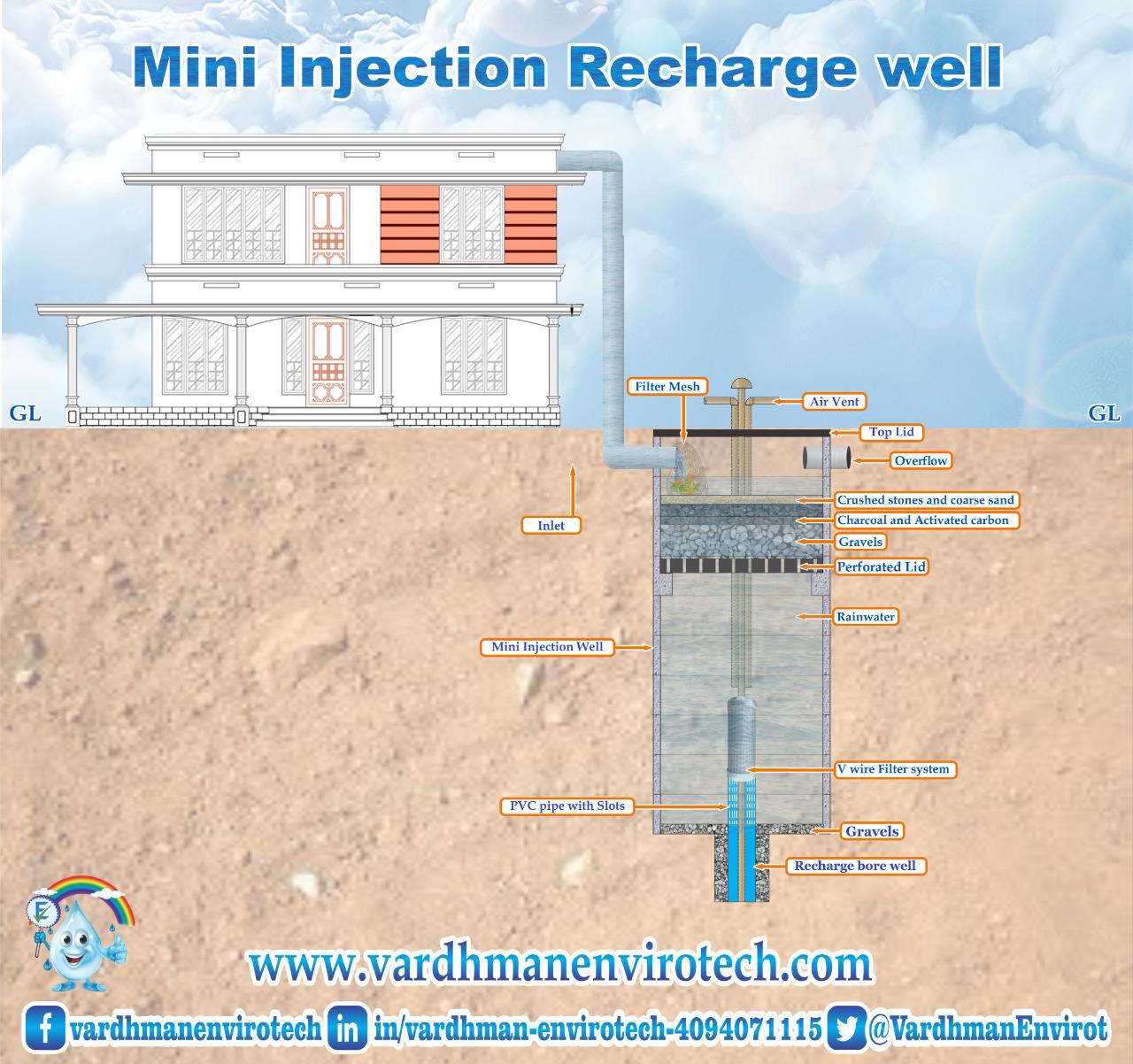
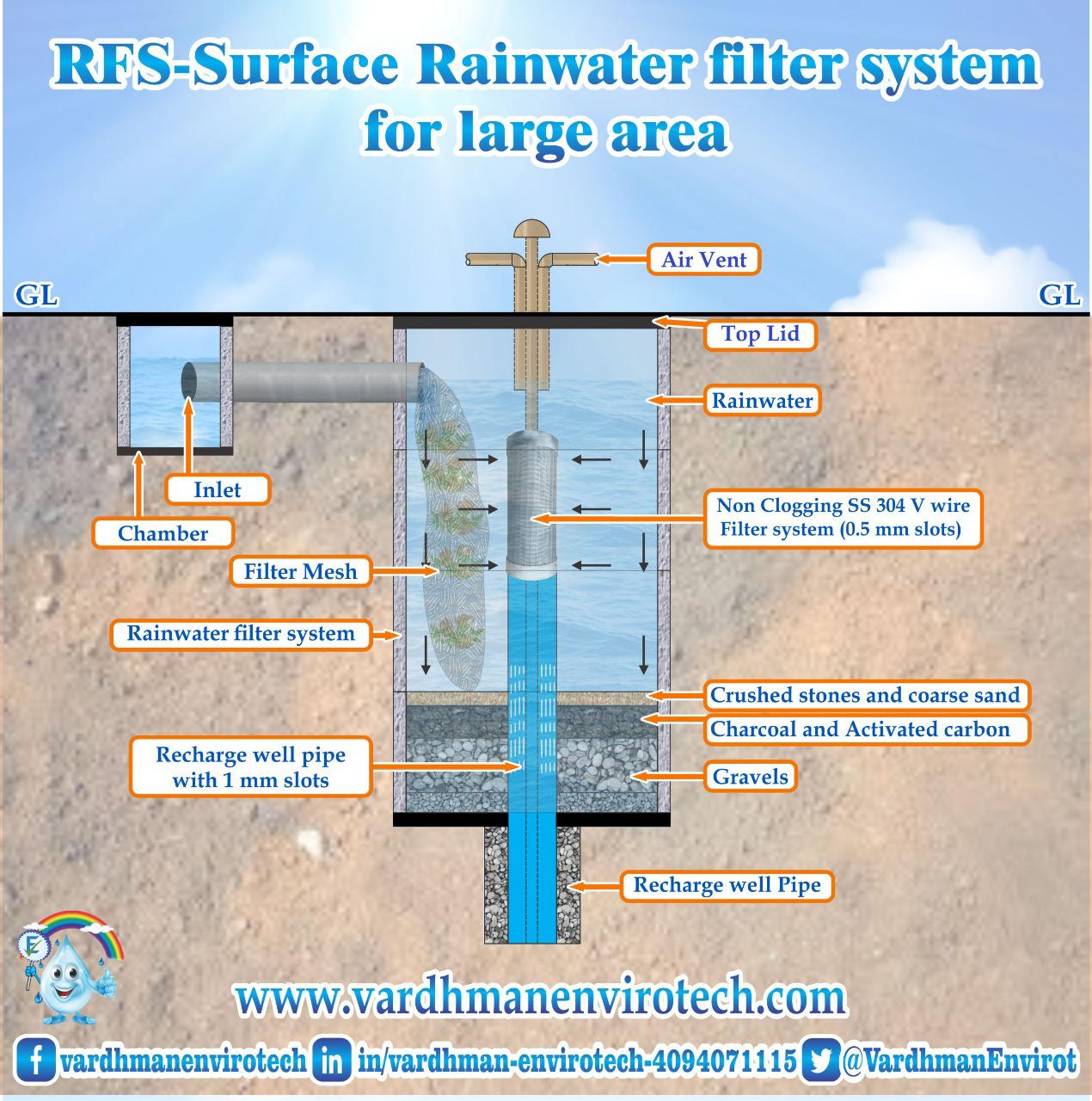
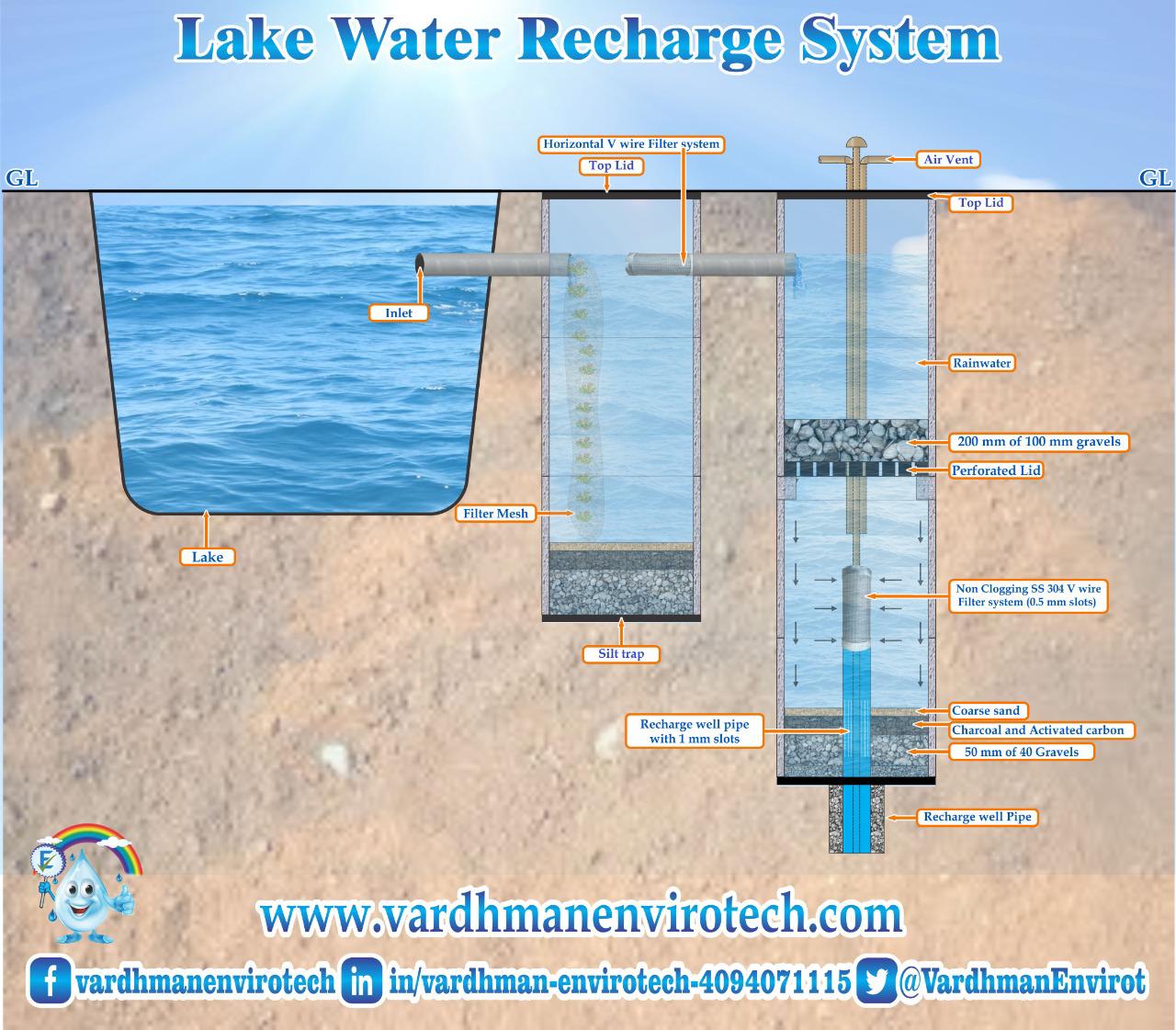
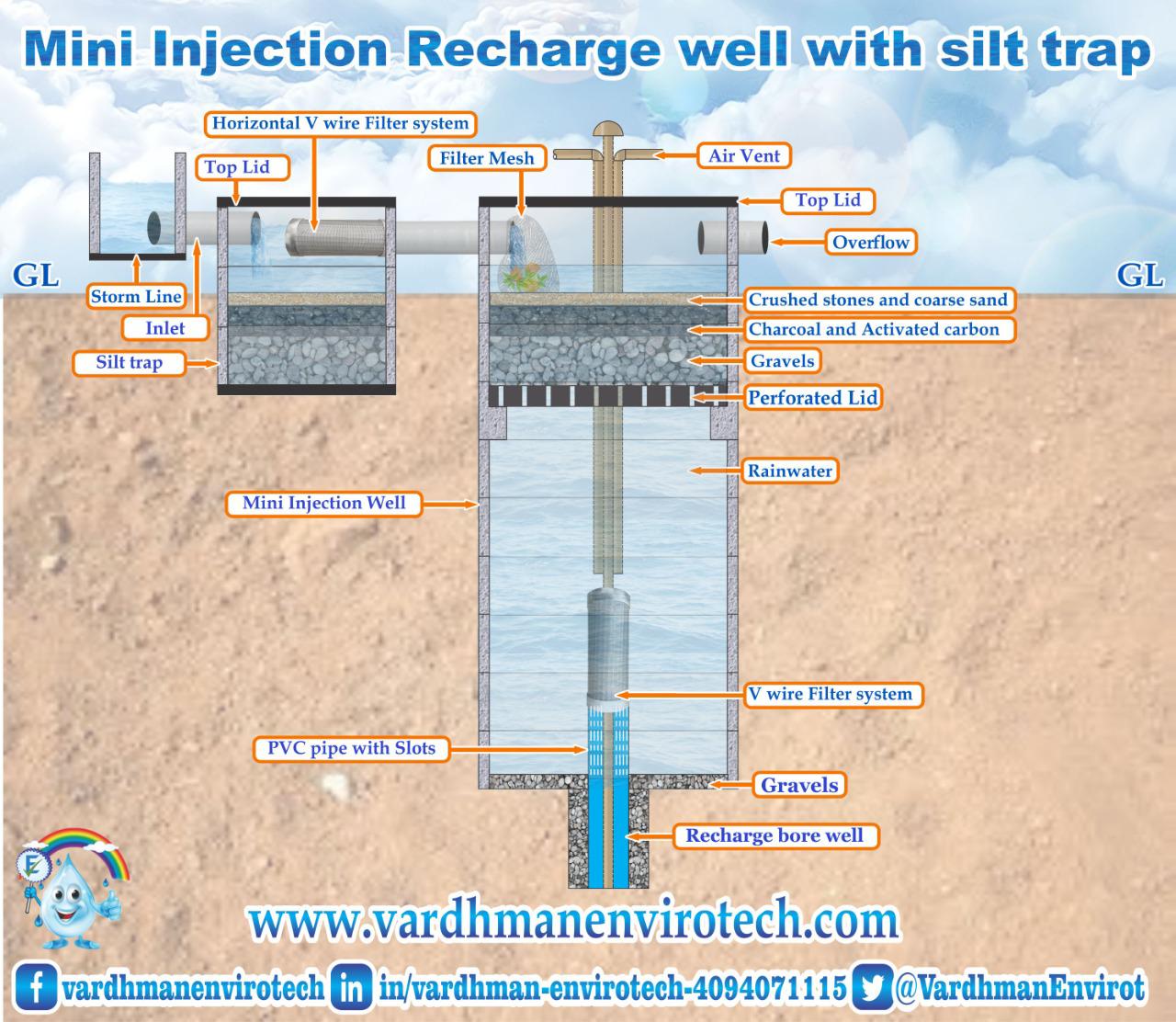
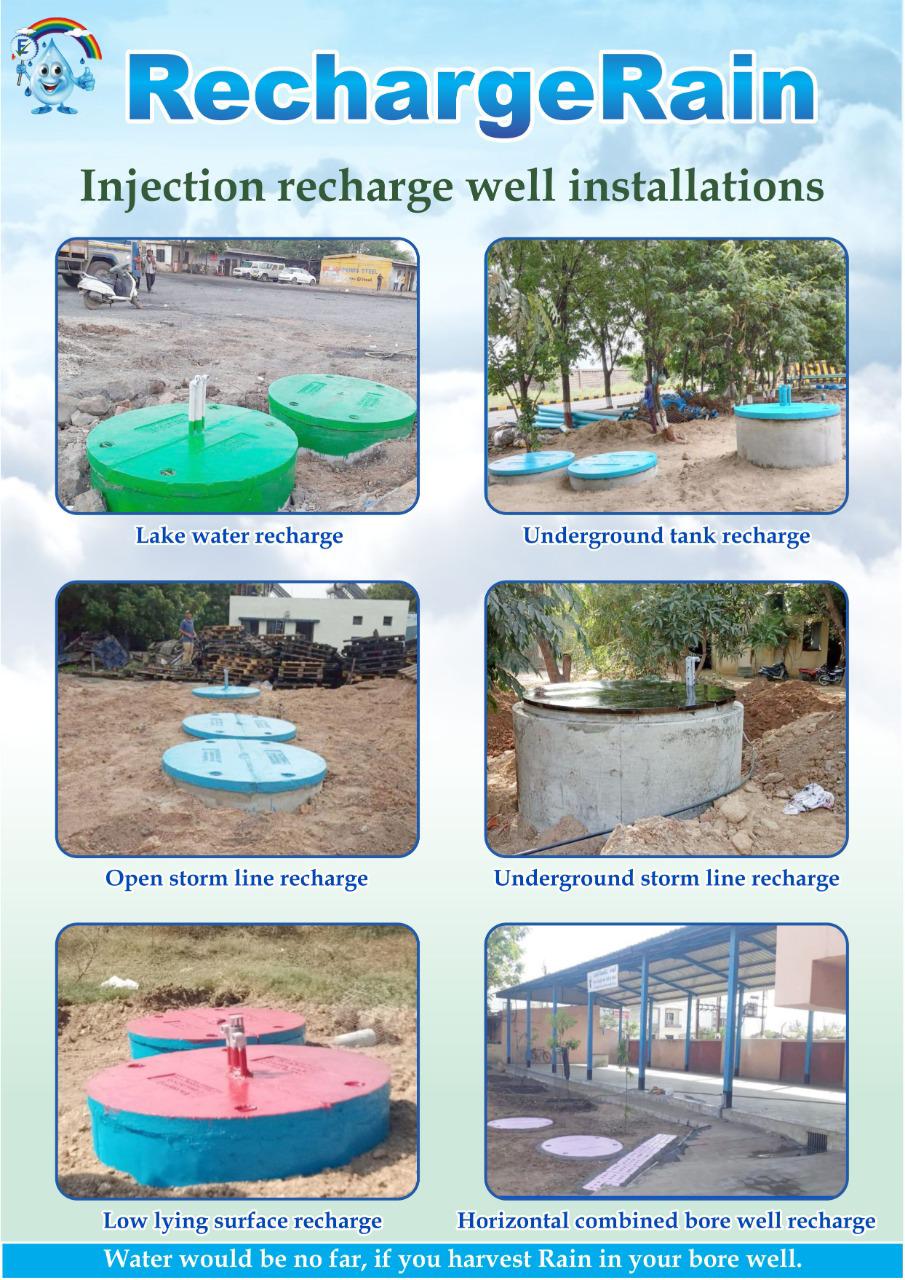
“Water shortage is a bane,
Let’s invert an umbrella & Catch the rain!
Vardhman Envirotech,
India’s Passionate Rainwater Company
